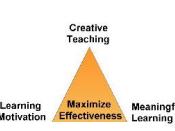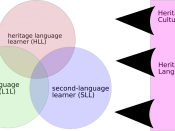The constructivist theory of learning has been one of the more popular epistemologies for learners, teachers and scholars alike, particularly in the last decade. The two primary strands of constructivism are known as Cognitive or Individual Knowledge Constructivism and Social Constructivism. It will be shown that learning is a social process and therefore that Social Constructivism is the strand of the constructivist epistemology is the most relevant for analysing the implications of constructivism for the design of learning environments. This will be the focus of this work. However, personal constructivism, which bases itself on the learner's interaction with the physical world, will also be looked at. The defining features of the social constructivist theory of learning are that public bodies of knowledge can be internalised as part of the learning process, knowledge is a socially constructed phenomena and the fact that as a result of the above principles, colloquial language is developed amongst communities of learners.
Above all, the learner is an active agent in the learning process.
With the learner as the focus in constructivist ideals, the learning environment must also be centred on the learner. This may seem as lessening the responsibility of the teacher but in fact is not. The responsibility of the teacher is merely changed from being a transmitter of information to a facilitator of an environment that encourages effective learning. This also involves the maintenance of a social environment that is conducive to intrinsic motivation and aiding the learner's feeling of belonging in the environment. These facets of constructivism will be shown to enhance learning ability and maintain the focus of the learning environment on the learner.
In a constructivist frame of thinking, it is widely accepted that it is primarily the teacher's responsibility to provide a situation where a learner's needs are...



Pretty good
I thought that some interesting points were raised, but that there could have been more elaboration or practical examples given. Just from a pedantic point of view, I thought there were quite a few grammatical and syntactical errors which were a little distracting.
I also think that if you are going to talk about ZPD then you should really mention that it was Vygotsky who came up with this concept.
Hope I'm not sounding too negative - because reading your essay did cover some interesting points. Thanks a lot
2 out of 2 people found this comment useful.